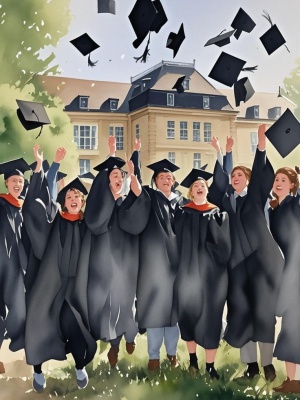How to Make Your Own Watercolor Paint: A Complete DIY Guide
Introduction to Homemade Watercolor Paints
Creating your own watercolor paint is a rewarding artistic endeavor that allows for complete creative control over your palette. Unlike commercial paints, homemade watercolors let you experiment with unique pigments and binders to achieve truly custom colors. Whether you're an artist looking for specific hues or simply enjoy DIY projects, making watercolor paint is surprisingly straightforward with the right materials and techniques.
This comprehensive guide will walk you through the entire process, from selecting quality pigments to properly storing your finished paints. You'll discover how professional-grade watercolors differ from store-bought versions and learn techniques used by master artists throughout history. For more artistic inspiration, check out our gallery featuring beautiful watercolor artworks.
Essential Materials for Making Watercolor Paint
Pigments: The Heart of Your Paint
The quality of your homemade watercolor paint begins with selecting the right pigments. Professional artists typically use:
- Mineral pigments (natural earth tones)
- Modern synthetic pigments (brighter colors)
- Plant-based dyes (for transparent washes)
Binders and Additives
The binder holds pigment particles together and affects the paint's working properties. Gum arabic is the traditional binder for watercolors, providing excellent solubility and adhesion. Other essential components include:
- Distilled water (prevents bacterial growth)
- Glycerin (improves rewetting ability)
- Honey or corn syrup (adds plasticity)
Step-by-Step Watercolor Paint Making Process
Preparing Your Workspace
Before beginning, set up a clean, organized workspace with proper ventilation. Wear protective gear as some pigments can be toxic when inhaled. Cover surfaces with newspaper or plastic sheeting for easy cleanup.
Mixing the Paint Base
Create your binder solution by dissolving gum arabic in warm distilled water (typically a 1:2 ratio). Add small amounts of honey or glycerin (about 5-10% of the total volume) to improve paint performance. Let this mixture sit for several hours to fully dissolve.
Incorporating Pigments
Slowly add pigment to your binder solution, mixing thoroughly with a palette knife or glass muller. The ideal consistency should be similar to heavy cream. Professional artists recommend grinding the mixture for at least 15-20 minutes to ensure proper dispersion of pigment particles.
Troubleshooting Common Watercolor Paint Problems
Problem: Paint Cracks When Dry
Solution: Increase the amount of binder or add more plasticizer (honey/glycerin). The paint film may be too brittle.

Problem: Colors Appear Dull
Solution: Use higher quality pigments or increase pigment concentration. Some colors naturally appear more vibrant when mixed with a small amount of ox gall liquid.
Problem: Paint Won't Rewet Properly
Solution: Adjust your plasticizer ratio. Too little glycerin or honey can make paints difficult to reactivate. For more technical painting advice, explore our AI painting guide.
Advanced Techniques and Customization
Creating Unique Color Blends
Experiment with mixing different pigments to develop signature colors. Historical palettes often included:
- Lapis lazuli for ultramarine blue
- Cochineal for crimson reds
- Madder root for rose tones
Adding Special Effects
For textured effects, try incorporating:
- Granulating agents (like salt or sand)
- Iridescent powders
- Ox gall liquid for improved flow
Conclusion: The Art of Homemade Watercolors
Making your own watercolor paint is both an art and a science that connects you to centuries of painting tradition. While the process requires patience and practice, the results - completely customized colors with unique characteristics - are well worth the effort. As you gain experience, you'll develop preferences for specific pigment combinations and binder ratios that suit your artistic style.
Remember that quality materials make a significant difference in your final product. For artists interested in digital alternatives, our text to image tools offer another creative outlet. Whether you choose traditional or digital methods, the most important element is your creative vision brought to life through color.